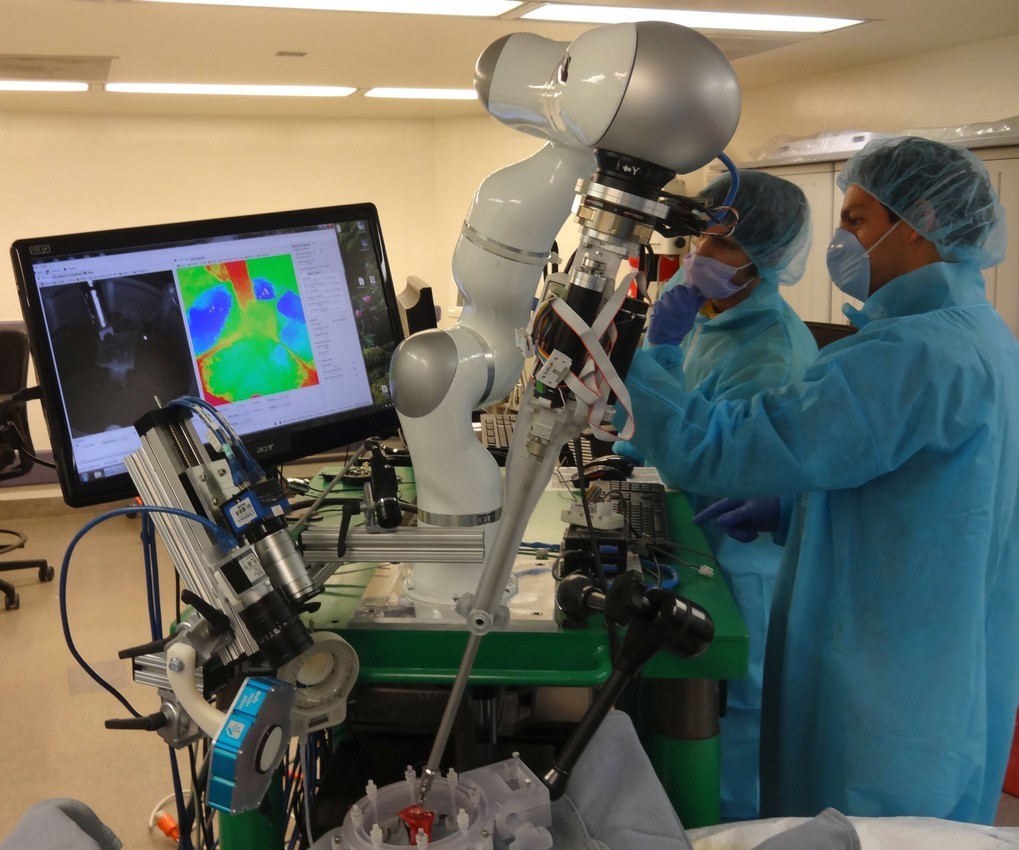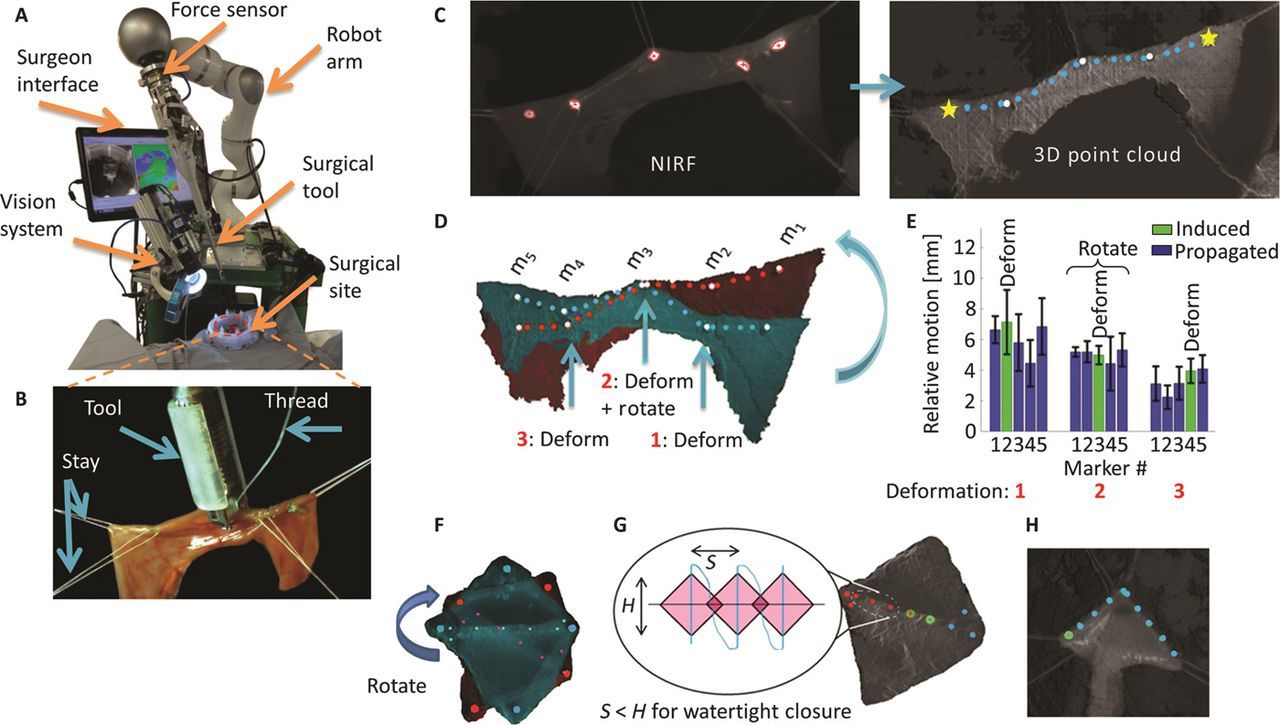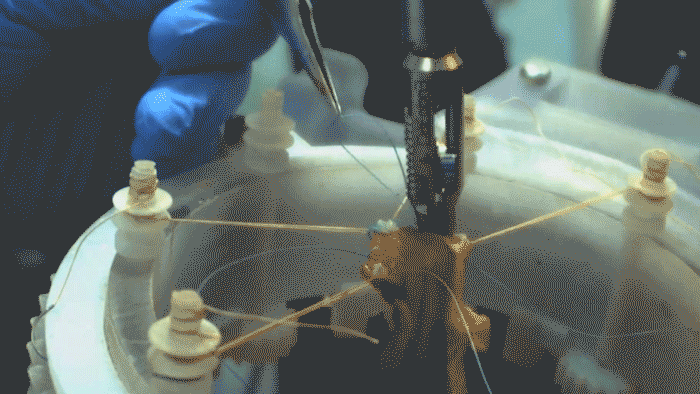Autonomous robot surgeon performed an operation on soft tissues almost without human help.

Every year in the United States alone, more than 45 million soft tissue surgeries are performed. Such operations are difficult even for an experienced surgeon - you have to work with a soft and pliable material. The edges of the material are uneven, and it is very difficult to choose the best point for threading a needle on each seam.
However, specialists from the Washington Children's National Medical Center designed a robot that successfully performed such an operation . He even surpassed the professional surgeon in the accuracy of suturing.
For the tests, an operation was performed to impose an intestinal anastomosis (connection of two tubular sections of the intestine) - a standard procedure that ends many operations on the intestines. When applying such seams, it is important to maintain clear gaps between the seams and not to tighten the thread too much.

The Smart Tissue Autonomous Robot (STAR) is specially designed for soft tissue operations. The video shows how a mechanical arm stitches, carefully aiming with the help of a computer vision system (infrared cameras orient themselves on the fluorescent markers marked on the fabric). The human assistant only helps to straighten the thread, so that it does not get tangled when it is pulled through the fabric.

A detailed study of the stitches showed that the robot coped with the operation even better than a human. To check the stitched gut connected to the pump and checked how much pressure will withstand the seams. The seam of the robot withstood more pressure.

Seven days after the operation, no experimental complications were observed in the test pig.
The scientific work was published on May 4, 2016 in the journal Science Translational Medicine (doi: 10.1126 / scitranslmed.aad9398, pdf ).
In general, robots have long been used in surgery, usually for the most accurate operations with tiny instruments, but the surgeon controls the operation, observing through the monitor. The new STAR robot is almost completely autonomous. It is behind such systems of automatic repair of the human body - the future of medicine.
The robot will not allow stupid human errors, which unfortunately happen very often in surgery.
